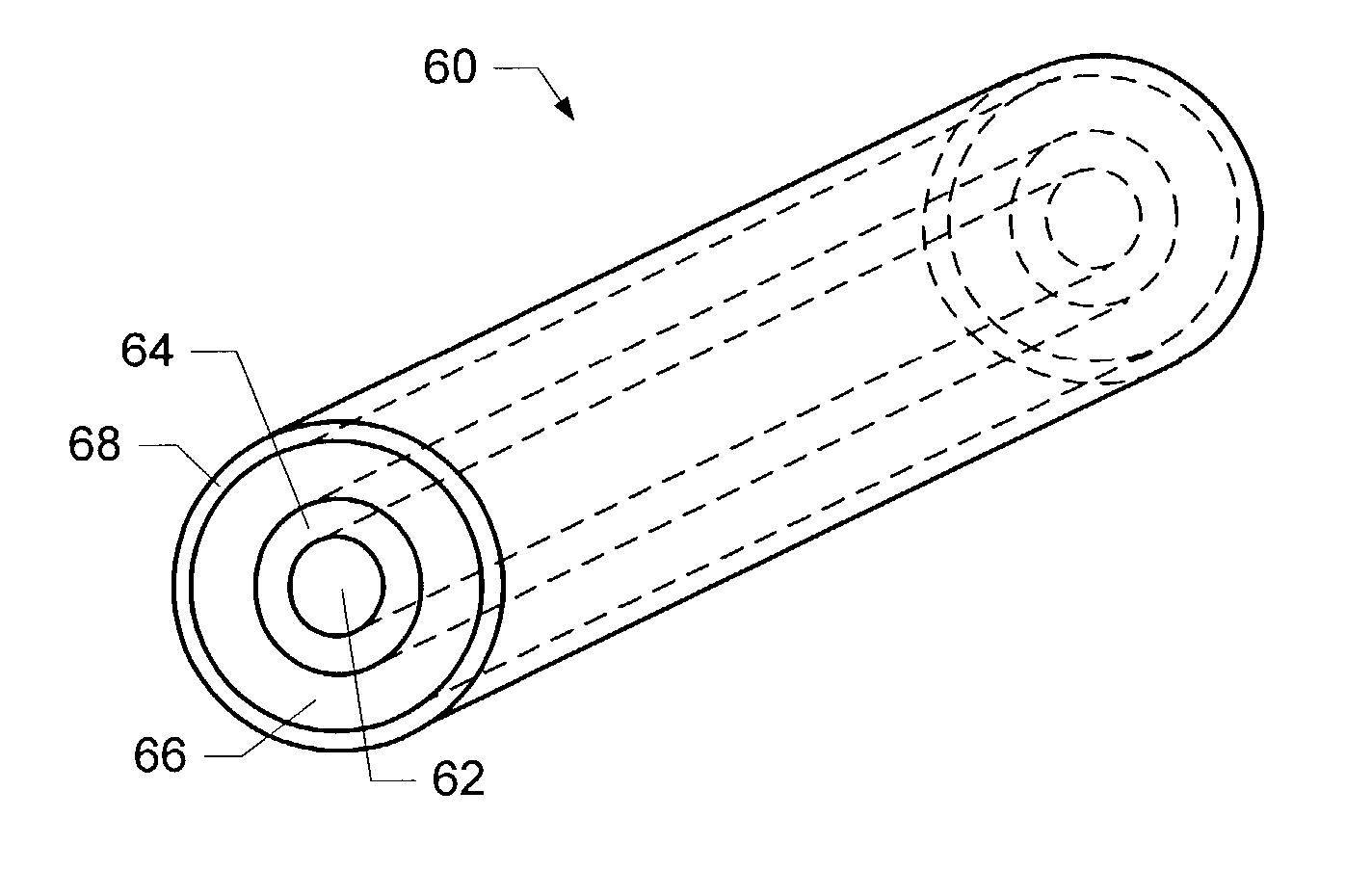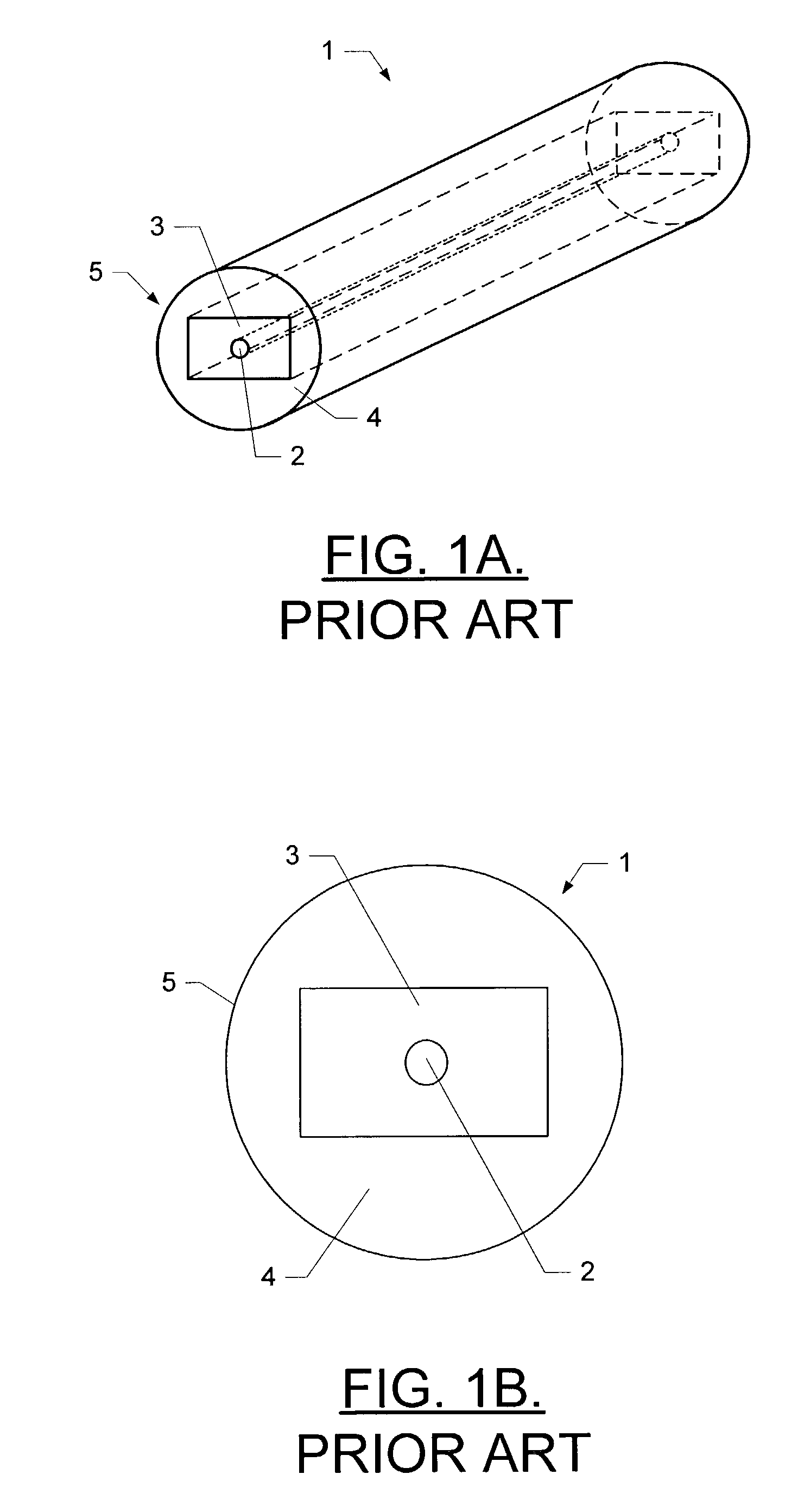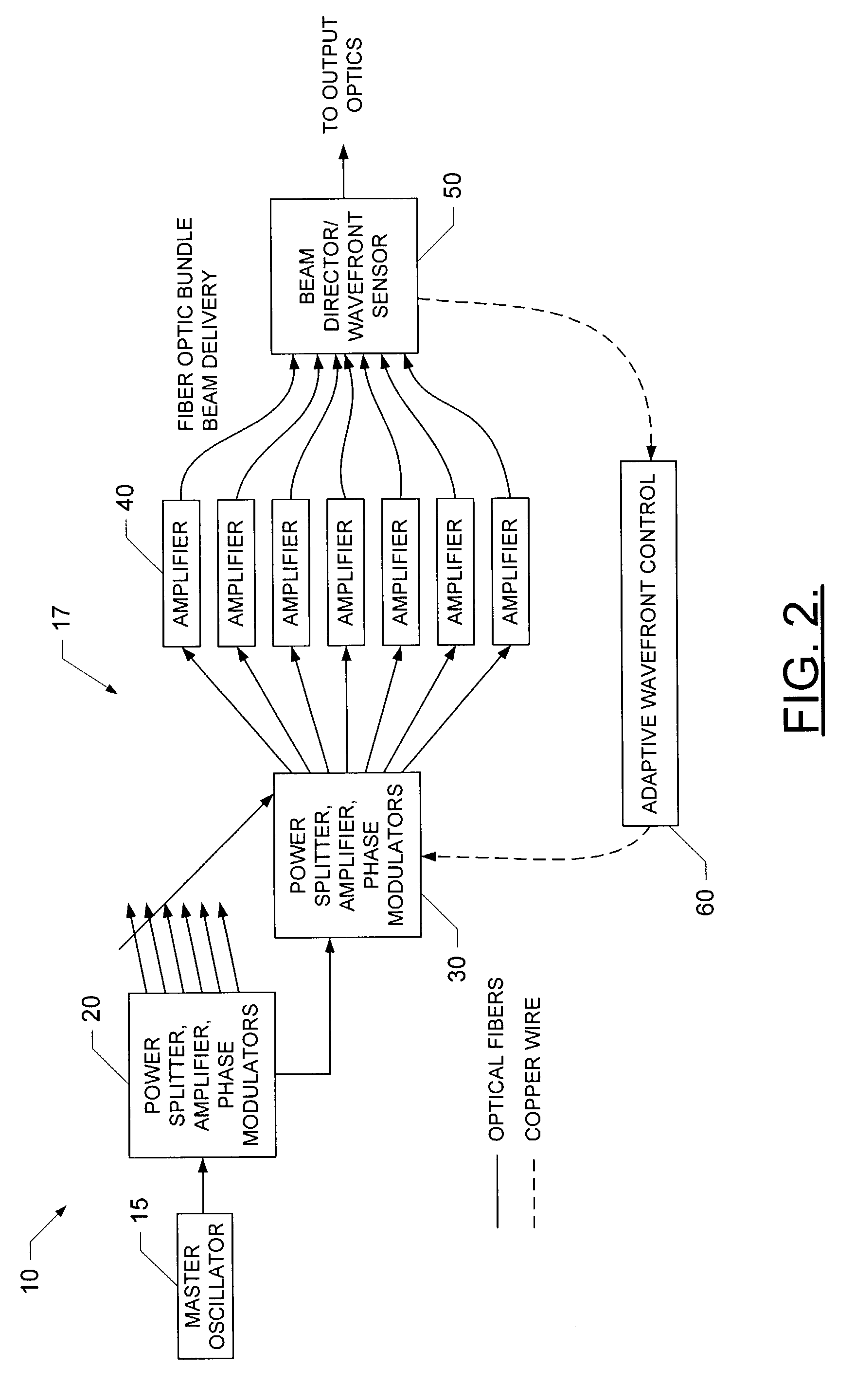Fiber amplifier having a non-doped inner core and at least one doped gain region
a fiber amplifier and inner core technology, applied in the field of optical fiber amplifiers, can solve the problems of limited energy conversion process of such systems, thermal energy release that heats the fiber amplifier, and elevated temperatures in the core of the fiber amplifier, so as to minimize waste heat generation, overcome inherent intensity limitations, and high stokes
- Summary
- Abstract
- Description
- Claims
- Application Information
AI Technical Summary
Benefits of technology
Problems solved by technology
Method used
Image
Examples
Embodiment Construction
[0025]The present invention now will be described more fully hereinafter with reference to the accompanying drawings, in which preferred embodiments of the invention are shown. This invention may, however, be embodied in many different forms and should not be construed as limited to the embodiments set forth herein; rather, these embodiments are provided so that this disclosure will be thorough and complete, and will fully convey the scope of the invention to those skilled in the art. Like numbers refer to like elements throughout.
[0026]One example of a coherent phased array of fiber optic amplifiers suitable for use in the present invention for generating high-power laser beams needed for long-range radar system applications is shown in FIG. 2. This particular laser power amplifier is described in detail in U.S. Pat. No. 5,694,408, the contents of which are hereby incorporated by reference herein in its entirety. It will be appreciated that the power splitter, amplifier and phase m...
PUM
 Login to View More
Login to View More Abstract
Description
Claims
Application Information
 Login to View More
Login to View More - R&D
- Intellectual Property
- Life Sciences
- Materials
- Tech Scout
- Unparalleled Data Quality
- Higher Quality Content
- 60% Fewer Hallucinations
Browse by: Latest US Patents, China's latest patents, Technical Efficacy Thesaurus, Application Domain, Technology Topic, Popular Technical Reports.
© 2025 PatSnap. All rights reserved.Legal|Privacy policy|Modern Slavery Act Transparency Statement|Sitemap|About US| Contact US: help@patsnap.com



